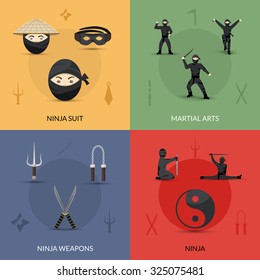Embark On A Fascinating Adventure Right Into The World Of Martial Arts, Where The Blend Of Age-Old Customizeds And Modern Performance Awaits
Embark On A Fascinating Adventure Right Into The World Of Martial Arts, Where The Blend Of Age-Old Customizeds And Modern Performance Awaits
Blog Article
Material Create By-Adkins Stokes
Enter the old world where martial arts were substantiated of necessity in diverse areas. Societies crafted unique fighting styles intertwined with historical contexts. Techniques advanced over centuries through committed technique and cultural exchanges. Today, modern-day martial arts mix conventional components for optimal efficiency. Philosophically, martial arts emphasize technique, self-improvement, and harmony. Respect, humility, and equilibrium are foundational concepts guiding specialists towards growth and durability. Explore the midsts of this abundant history and ideology to uncover the profound impacts forming this enduring discipline.
Origins of Fighting Style
Fighting style originated in numerous regions around the world, developing as functional combat systems to defend against threats. These ancient combating styles were established out of need, with each culture crafting methods matched to their distinct environments and difficulties. From martial arts store grappling arts of Jujutsu in Japan to the striking techniques of Martial art in China, martial arts were deeply intertwined with the historic, social, and cultural textile of their particular cultures.
In Japan, the samurai class refined martial arts like Kenjutsu, the art of the sword, which later advanced right into the more promoted type of Kendo. On the other hand, in Brazil, Capoeira became a mix of dancing and battle, created by enslaved Africans as a way to resist injustice. Each martial art carries with it a rich background and viewpoint, reflecting the worths and beliefs of individuals who practiced them.
As you delve into the origins of martial arts, you reveal a tapestry of human resourcefulness, resilience, and the stubborn spirit of warriors throughout time.
Advancement of Strategies
Through centuries of practice and refinement, battle strategies within various martial arts have gone through a profound advancement. From what is it worth like Kung Fu and Karate to more contemporary self-controls such as Brazilian Jiu-Jitsu and Krav Maga, the advancement of methods has been driven by a combination of cultural impacts, functional applications, and technological improvements.
One substantial facet of this advancement is the cross-pollination of methods between different martial arts. For example, techniques from conventional Japanese Jiu-Jitsu were included into the production of Judo by Jigoro Kano in the late 19th century. This blending of styles has brought about the development of crossbreed martial arts like Mixed Martial Arts (MIXED MARTIAL ARTS), which incorporate aspects of striking, grappling, and entry methods.
In addition, the development of methods has been shaped by the raising focus on efficiency and efficiency in battle. Experts have actually continuously sought to refine their strategies through rigorous training, trial and error, and competition, causing the development of highly specialized and efficient battling styles. In general, the evolution of techniques in martial arts shows the dynamic nature of battle and the ongoing mission for enhancement and technology.
Philosophical Structures
Discovering the underlying thoughtful concepts of martial arts offers understanding right into their core values and assisting beliefs. At the heart of several martial arts techniques is the concept of technique itself. By educating your body and mind to act as one cohesive device, you grow technique that expands past the dojo or gym into daily life. This technique encompasses regard, humbleness, and self-constraint, forming not just your physical abilities however additionally your character.
Another basic thoughtful structure in martial arts is the concept of continual self-improvement. The journey of understanding a fighting style is endless, with professionals frequently making every effort to far better themselves, both physically and emotionally. This concentrate on development cultivates durability, perseverance, and a development mindset that can be put on all facets of life.
Moreover, martial arts stress the significance of harmony and balance. Methods are developed to use an opponent's power versus them, highlighting the principle of producing and rerouting force as opposed to meeting it head-on. This philosophy encompasses interpersonal partnerships, promoting relaxed resolutions and good understanding. By embracing these thoughtful structures, martial artists not only improve their fight skills however also grow a way of life fixated personal growth, regard, and harmony.
Conclusion
Finally, the background and philosophy of martial arts supply a rich tapestry of tradition, technique, and self-improvement.
Consider example the story of Bruce Lee, who changed martial arts by blending different designs and approaches to produce his own distinct form of Jeet Kune Do.
Via dedication and innovation, martial artists continue to push borders and motivate others to reach their complete possibility both in fight and in life.
